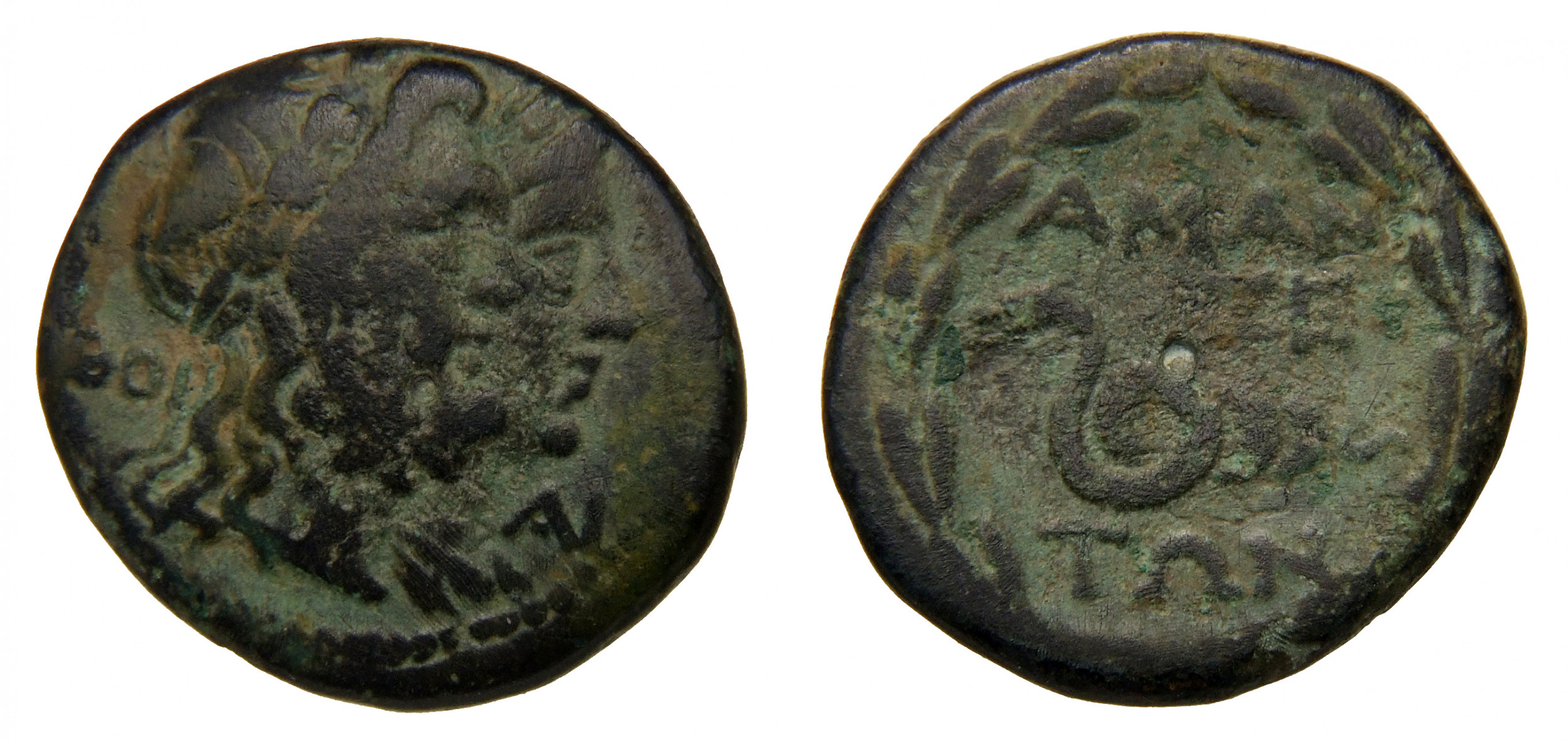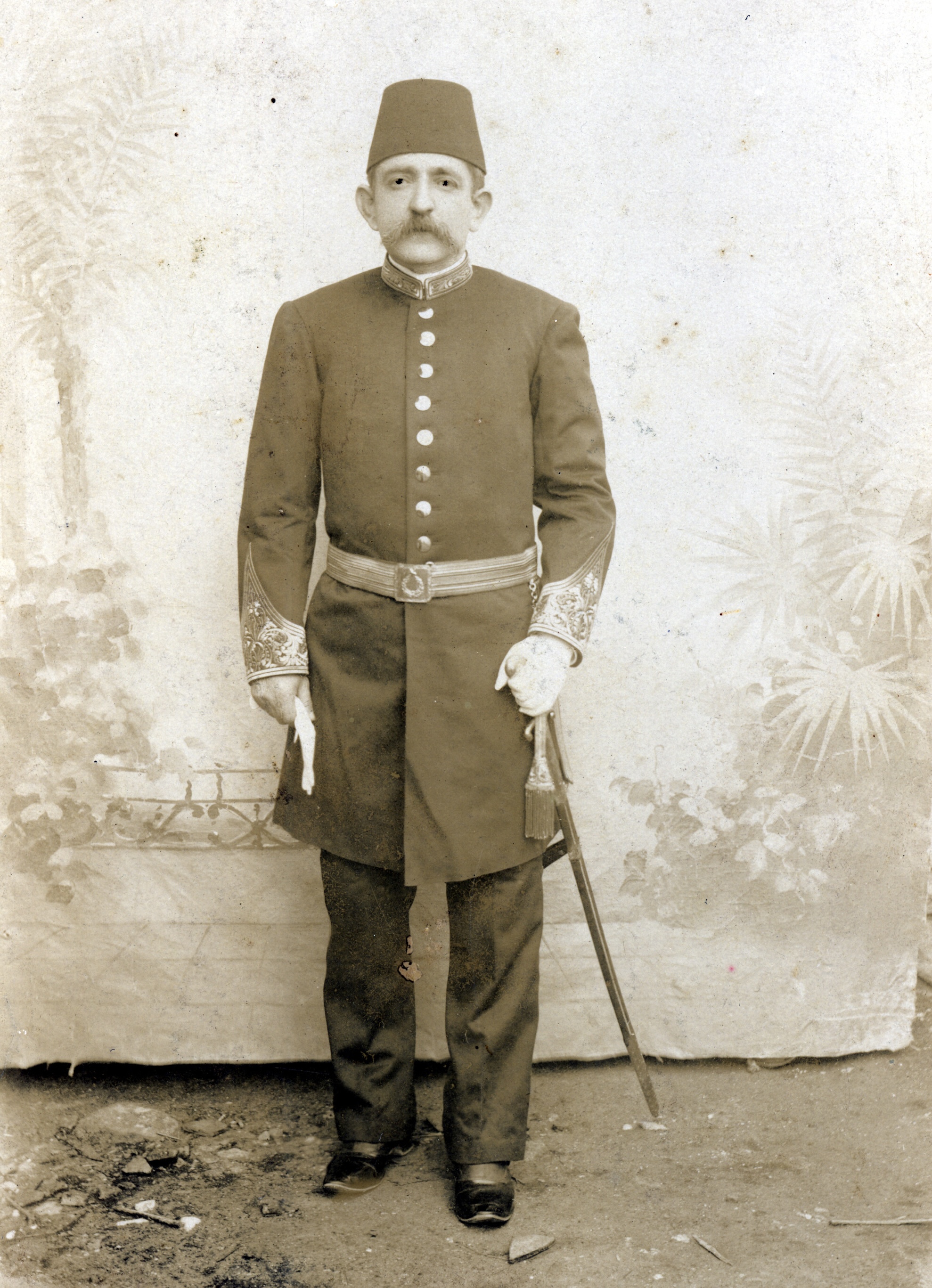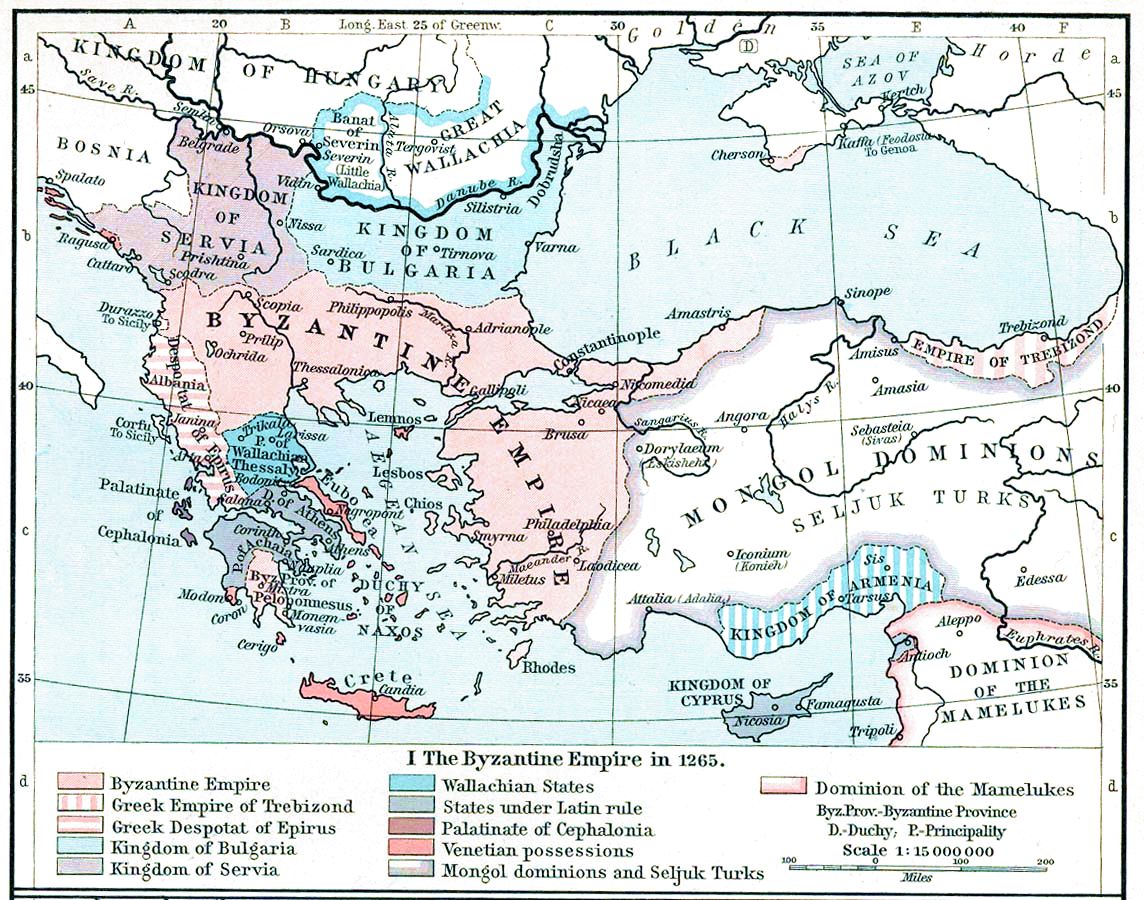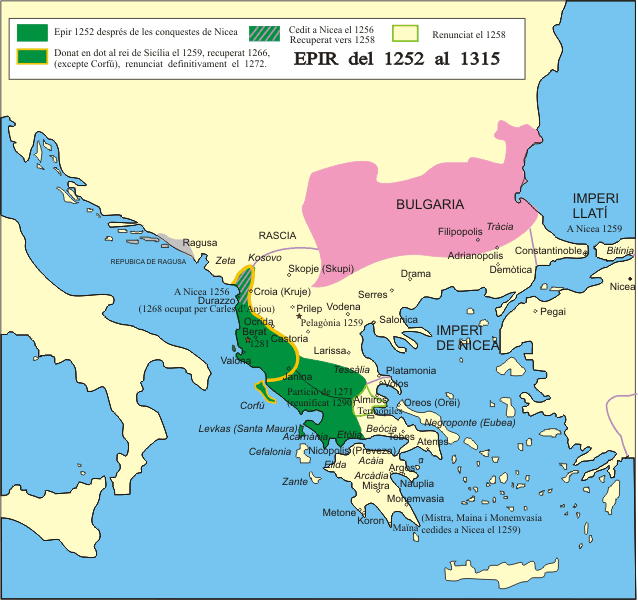|
Kaninë
Kaninë is a settlement in the Vlorë County, southwestern Albania. At the 2015 local government reform it became part of the municipality Vlorë. It is home to the Kaninë Castle. Name The name of the fortified settlement of Kanina was attested for the first time at the beginning of the 11th century AD in Byzantine Greek as (in plural form). The toponym is significant for the history of the Albanian language since ''Kanina'' represents a toponym that shows no sign of the dialect phenomenon of rhotacism, which is explained by the fact that the settlement was recorded with the name ''Kanina'' in a period during which rhotacism in Albanian was no longer active for some time. On the other hand the name of nearby ''Vlorë'', attested earlier, was subject to the Albanian rhotacism. History The settlement of Kaninë developed below a hilltop Kaninë Castle which overlooks the village. The first phase of the fort dates to the late 4th/early 3rd century BCE and is linked to the developmen ... [...More Info...] [...Related Items...] OR: [Wikipedia] [Google] [Baidu] |
Kaninë Castle
Kaninë Castle ( sq, Kalaja e Kaninës) is a castle in the village Kaninë near Vlorë, in southwestern Albania. History This castle was built in the village with the same name which is about from Vlorë. The castle rises on the side of the Shushica Mountain, about above sea level. The castle was built on the site of an ancient settlement, one of the oldest in the Vlora region. The castle is believed to have been erected in the 3rd century B.C. In the 4th century B.C. the castle was transformed into a fortress town. In the 6th century A.D. the castle was reconstructed by Justinian I. The castle was the center of the Principality of Valona The Principality of Valona and Kanina, also known as the Despotate of Valona and Kanina or simply the Principality of Valona (1346–1417) was a medieval principality in Albania, roughly encompassing the territories of the modern counties of Vlor� ... in the 14th century. The settlement covers an area of 3.6 hectares. Referen ... [...More Info...] [...Related Items...] OR: [Wikipedia] [Google] [Baidu] |
Vlorë
Vlorë ( , ; sq-definite, Vlora) is the third most populous city of the Republic of Albania and seat of Vlorë County and Vlorë Municipality. Located in southwestern Albania, Vlorë sprawls on the Bay of Vlorë and is surrounded by the foothills of the Ceraunian Mountains along the Albanian Adriatic and Ionian Sea Coasts. It experiences a Mediterranean climate, which is affected by the Ceraunian Mountains and the proximity to the Mediterranean Sea. Vlorë was founded as Aulon as an Ancient Greek colony on the Illyrian coast and was conquered at different periods throughout history by Romans, Byzantines, Normans, Venetians and Ottomans. Between the 18th and 19th centuries, the Albanians gathered both spiritual and intellectual strength for national consciousness, which conclusively led to the Albanian Renaissance. Vlorë played an instrumental role in Albanian Independence as an epicenter for the founders of modern Albania, who signed the Declaration of Independence on 2 ... [...More Info...] [...Related Items...] OR: [Wikipedia] [Google] [Baidu] |
Oricum
Oricum ( grc, Ὤρικον, Ὤρικος or Ὠρικός; lat, Oricum or ''Oricus''; sq, Oriku or ''Orikum'') was a harbor on the Illyrian coast that developed in a Ancient Greek polis at the south end of the Bay of Vlorë on the southern Adriatic coast. It was located at the foot of the Akrokeraunian Mountains, the natural border between ancient Epirus and Illyria. Oricum later became an important Roman city between the provinces of Epirus Vetus and Epirus Nova in Macedonia. It is now an archaeological park of Albania, near modern Orikum, Vlorë County. Oricum holds such a strategic geographical position that the area has been in continuous usage as a naval base from antiquity to the present-days. It appears that the site of Oricum was uninhabited before the 6th century BC. In the early period contacts between the Greeks and the local Illyrians were evidently absent in the hinterland of the site. Early Greek sources describe Orikos as a harbor ( el, λιμήν, ''limen''). ... [...More Info...] [...Related Items...] OR: [Wikipedia] [Google] [Baidu] |
Amantes (tribe)
The Amantes (alternatively attested in primary sources, as Amantieis or Amantini) ( grc, Άμαντες or Αμαντιείς; la, Amantinii) were an ancient tribe located in the inland area of the Bay of Vlora north of the Ceraunian Mountains and south of Apollonia, in southern Illyria near the boundary with Epirus, nowadays modern Albania. A site of their location has been identified with the archaeological settlement of Amantia, placed above the river Vjosë/Aoos. Amantia is considered to have been their main settlement. The Amantes also inhabited in the area of an ancient sanctuary of the eternal fire called '' Nymphaion''. The Amantes firstly appear in ancient literature in the 4th century BCE in the ''Periplus'' of Pseudo-Skylax as an Illyrian tribe bordering the Epirote Chaonians. In Hellenistic sources they are mentioned among the Epirotes. In Roman-times literature they appear as barbarians. In modern historiography a number of scholars regard the Amantes as Ill ... [...More Info...] [...Related Items...] OR: [Wikipedia] [Google] [Baidu] |
Zihni Abaz Kanina
Zihni Abas Kanina Hamzaraj (18 January 1885 Kanina, Ottoman Empire – 1959 in Tirana, Albania) was a prominent Albanian diplomat and politician. He was one of the signatories of Albanian Declaration of Independence. He was born in a notable Albanian family in Kanina, near Vlora, and was active during the National Renaissance of Albania. After the declaration of independence, he was Director General in the Ministry of Foreign Affairs in the Provisional Government of Albania, a post he would regain during the Kingdom of Ahmet Zogu. During the Second World War he worked as a teacher of the Albanian language in his hometown, becoming a prominent activist of Balli Kombetar Balli may refer to: Places Ballı (literally "(place) with honey") is a Turkish place name that may refer to the following places in Turkey: * Ballı, Ardanuç, a village in the district of Ardanuç, Artvin Province * Ballı, Kahta, a village ... against occupants and communist forces. After the war, t ... [...More Info...] [...Related Items...] OR: [Wikipedia] [Google] [Baidu] |
Donika Kastrioti
Andronika Arianiti, also known as Donika Kastrioti, (born 1428 – died 1506) was an Albanian noblewoman and the spouse of Albanian leader Skanderbeg (born Gjergj Kastrioti). She was the daughter of Gjergj Arianiti, an earlier leader in the ongoing revolt against the Ottomans. Life Donika was born in Kaninë, in 1428. Her father, Gjergj Arianiti was a member of the Arianiti family whose domain stretched across the Shkumbin valley and the old Via Egnatia road and reached to the east today's Bitola. Her mother, Maria Muzaka was a member of the Muzaka family whose domain was the Myzeqe region. A month after the Treaty of Gaeta, on 21 April 1451, Skanderbeg married Donika, and thus strengthened the ties with the Arianiti family, in the Eastern Orthodox Ardenica Monastery, in Lushnje, present-day southwestern Albania. Later her sister Angelina married Serbian ruler Stefan Branković. She is venerated as a saint in the Serbian Orthodox Church. After the Ottoman conquest of A ... [...More Info...] [...Related Items...] OR: [Wikipedia] [Google] [Baidu] |
Thronion (Illyria)
Thronion or Thronium ( el, Θρόνιον) was a Greek city of the Euboians and Locrians in the border area between Illyria and Epirus, near Amantia. It is believed to lie somewhere to the south of Vlorë, between the Shushicë River and the sea. Some scholars, such as Hasan Ceka and Nicholas G.L. Hammond, have proposed Kaninë as the possible location. R.L. Beaumont, in addition to Kanina, also suggested Ploça and Klos. It was to have been founded after the Trojan War by the Abantes of Euboea and the inhabitants of the Locrian Thronium. It was taken at an early period by the inhabitants of the neighbouring town of Apollonia, and annexed to their territory, as appears from an epigram inscribed on a dedicatory offering of the Apolloniatae at Olympia., 4. See also *List of settlements in Illyria * List of ancient Greek cities *List of cities in ancient Epirus This is a list of cities in ancient Epirus. These were Greek poleis, komes or fortresses except for Nicopolis, which ... [...More Info...] [...Related Items...] OR: [Wikipedia] [Google] [Baidu] |
Qendër Vlorë
Qendër Vlorë is a former municipality in the Vlorë County, southwestern Albania. At the 2015 local government reform it became a subdivision of the municipality Vlorë. The population at the 2011 census was 7,621.2011 census results The municipal unit consists of the villages Bestrovë, Babicë e Madhe, Babicë e Vogël, Hoshtimë, , Kërkovë, , Sherishtë, Panaja, Xhyherinë, and |
Michael Doukas Glabas Tarchaneiotes
Michael Doukas Glabas Tarchaneiotes or Michael Tarchaneiotes Glabas ( el, ; – after 1304) was a notable Byzantine aristocrat and general. He served under emperors Michael VIII Palaiologos and Andronikos II Palaiologos in the Balkans, fighting against the Second Bulgarian Empire, Serbia, the Angevins of Naples and the Despotate of Epirus. He is also notable as the patron of several churches, most notably the Pammakaristos Church in Constantinople (mod. Istanbul), where he was buried. Life Military career Michael Doukas Glabas Tarchaneiotes was born , and is first mentioned in , when he was assigned to capture the city of Mesembria on the Black Sea coast from the deposed Bulgarian tsar Mitso Asen ()... In he defeated a Bulgarian army at Bizye, fortified Brysis, and proceeded to capture the fortresses Skopos, Petra and Skopelos, and the cities of Agathopolis, Sozopolis, Debeltos and Anchialos. He re-appears in 1278–79, leading another campaign against Bulgaria, where ... [...More Info...] [...Related Items...] OR: [Wikipedia] [Google] [Baidu] |
Michael II Komnenos Doukas
Michael II Komnenos Doukas, Latinized as Comnenus Ducas ( el, Μιχαήλ Β΄ Κομνηνός Δούκας, ''Mikhaēl II Komnēnos Doukas''), often called Michael Angelos in narrative sources, was from 1230 until his death in 1266/68 the ruler of the Despotate of Epirus, which included Epirus in northwestern Greece, the western part of Greek Macedonia and Thessaly, and western Greece as far south as Nafpaktos. Life Michael was an illegitimate son of Michael I Komnenos Doukas, the founder of the state of Epirus. The historian Demetrios Polemis estimates that he was born in the early years of his father's reign (1205–15), probably in ca. 1206. Like most members of his family, originally descended from the Angelos family, he preferred the surname "Doukas", or the variant "Komnenos Doukas" (Κομνηνός ὁ Δούκας), but is also referred to by contemporary Byzantine historians as "Angelos". After his father's murder in 1215 and the succession of his uncle Theodore Ko ... [...More Info...] [...Related Items...] OR: [Wikipedia] [Google] [Baidu] |
Helena Angelina Doukaina
Helena Angelina Doukaina ( 1242 – 1271) was Queen of Sicily as the second wife of King Manfred. Queen Helena was the daughter of Michael II Komnenos Doukas, Despot of Epirus, and Theodora Petraliphaina. Her marriage was an expression of the alliance of her father and the ruler of Sicily against the growing power of the Empire of Nicaea.Donald M. Nicol, ''The last centuries of Byzantium, 1261-1453'', second edition (Cambridge: University Press, 1993), p. 28 Marriage She was married to Manfred of Sicily 2 June 1259, after the death of his first wife Beatrice of Savoy in 1257 and his own rise to the throne on 10 August 1258. D. J. Geanakoplos notes that this marriage was surprising, considering Manfred's father Frederick II had been in an alliance with John III Vatatzes, the late ruler of the Empire of Nicaea, but "one must consider that conquest of the Byzantine Empire had been a traditional Norman aim for almost a century, and that Manfred was now in a strong enough position ... [...More Info...] [...Related Items...] OR: [Wikipedia] [Google] [Baidu] |
Protostrator
''Prōtostratōr'' ( el, πρωτοστράτωρ) was a Byzantine court office, originating as the imperial stable master. Its proximity to the imperial person led to a highly visible role in imperial ceremonies, and served as a springboard for several capable individuals, like Manuel the Armenian or the future emperors Michael II and Basil I the Macedonian, to reach the highest offices. From the mid-11th century, the post rose in importance, becoming more an honorific dignity for senior members of the court, than an actual office. From the 13th century on, the post could be held by several persons, and ranked eighth in the overall hierarchy of the court. Throughout its history, it was a title often borne by senior military commanders. The female form of the title, given to the wives of the ''prōtostratores'', was ''prōtostratorissa'' (πρωτοστρατόρισσα). History and evolution The title means "first ", reflecting the office's initial nature as chief of the impe ... [...More Info...] [...Related Items...] OR: [Wikipedia] [Google] [Baidu] |





